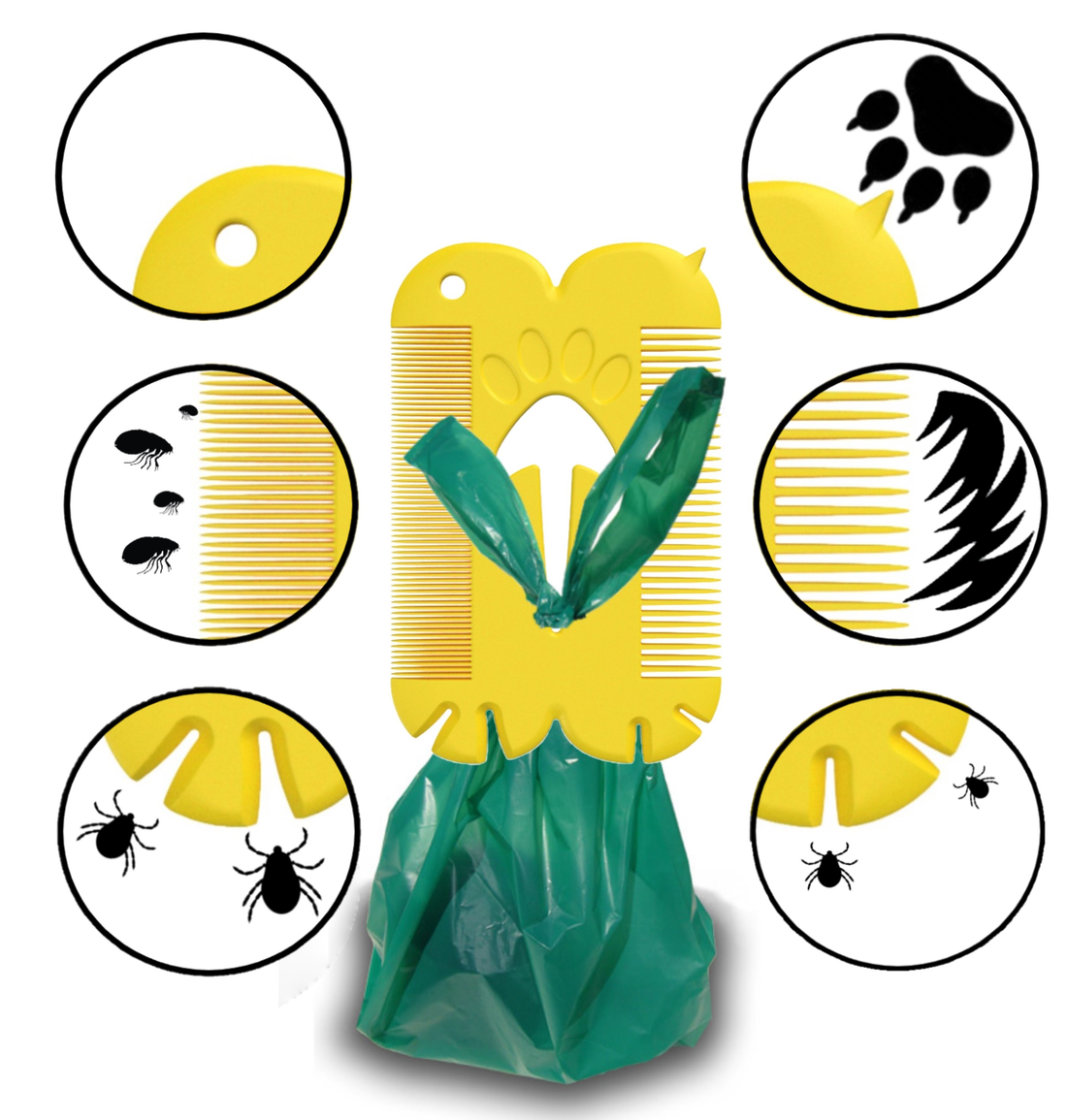Tick Remover vs Tweezers vs Tick Key vs Tick Twister (What’s Safest?)
When you find a tick, speed and technique matter more than anything. The safest method is a steady, even lift from as close to the skin as possible—no twisting, crushing, oils or heat. But which tool helps you do that best? Below we compare tick removers, tweezers, the tick key, and the tick twister so you can choose with confidence.
Buy the Pocket Tick Remover + Flea/Lice Comb
Quick verdict
If you want a tool you will actually carry, choose the credit-card tick remover. It supports the recommended lift technique, fits your wallet/lead pouch, adds an ultra-fine flea/lice comb for post-bite checks, and includes a hands-free waste-bag holder for walks.
Comparison table
| Tool | How it works | Pros | Cons | Best for |
|---|---|---|---|---|
| Tick Remover Card (multi-fork) | Slide smallest fork under mouthparts, lift slowly & steadily. | Wallet-size EDC; easy lift technique; multiple fork sizes; includes fine comb for checks; waste-bag slot for hands-free carry. | Requires choosing correct fork; practice once before first use. | Everyday carry; dogs & cats; quick trail/park response. |
| Fine-tip Tweezers | Grip close to skin and pull upward steadily. | Common household item; precise if used correctly. | Easy to squeeze/crush tick; hard to see in thick coats; no comb/check function. | At home with good light and steady hands. |
| Tick Key | Slot around tick and pull along skin to lift. | Simple one-piece tool; tough; attaches to keys. | Bulkier than a card; single slot can be awkward on very small ticks; no comb. | Key-ring users; medium/large ticks. |
| Tick Twister | Hook under tick; some versions suggest twisting to remove. | Popular; easy to get under raised ticks. | Twisting can be confusing; kits are bulkier; no comb; easy to mis-use in long fur. | Home kits; users who prefer hook-style tools. |
Step-by-step: the safe method
- Part the fur to the skin so you can see the tick clearly.
- Select the smallest fork that will slide under the mouthparts (or grip with very fine tweezers close to the skin).
- Keep the tool flat against the skin and lift slowly and steadily. Do not twist, crush, burn, or apply oils/chemicals.
- Confirm the tick is intact; clean the bite area and wash your hands/tools.
- Use the ultra-fine comb to check nearby coat for fleas, lice and eggs.
Get the compact tick remover + fine comb (credit-card size—carry it every day).

Why the pocket card wins in real life
- EDC portability: credit-card footprint means you’ll actually have it on walks, hikes and holidays.
- Error-proof technique: multi-fork design encourages the safe slow lift approach.
- Better follow-up: the built-in fine comb helps detect flea dirt and eggs immediately after removal.
- Walk convenience: waste-bag holder slot keeps your hands free until you find a bin.

FAQs
Is twisting ever recommended?
No twisting is needed to remove a tick safely. A steady, upward lift from close to the skin is the recommended approach. Focus on keeping the tool flat and lifting slowly.
Which tool is best for long-haired dogs?
The card’s smallest fork helps you slide under the mouthparts even in dense fur. Part to the skin and use a headlamp if needed.
Will a comb remove fleas completely?
A fine comb helps detect and reduce fleas and eggs, but you’ll still need a prevention/treatment plan from your vet for active infestations.
What if the tick breaks?
Don’t dig with needles or blades. If mouthparts remain or the area becomes irritated, contact your vet.
Ready to add one to your kit?
Keep a card in your lead pouch, wallet or glove box so you’re always prepared.
Add to cart — Pocket Tick Remover + Flea/Lice Comb

Safety note: “Safe” refers to manual, non-chemical tick removal when used as directed for dogs and cats. This page provides general guidance; always follow your veterinarian’s advice.







